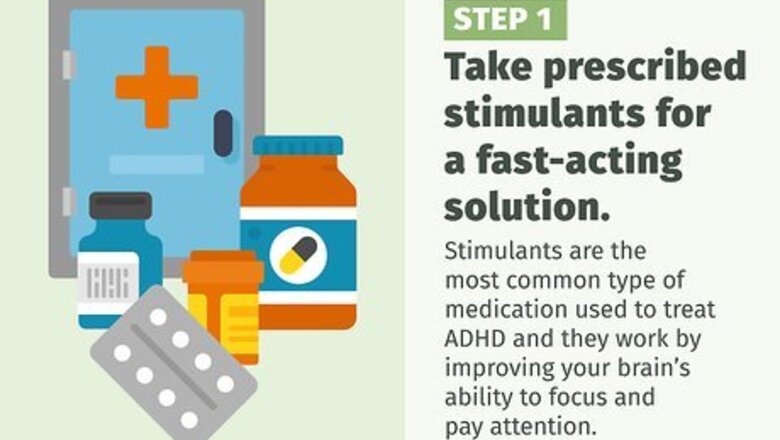
views
X
Research source
and they turned out well, right? Plus, we have more treatment options and understand ADHD even more than we did back when they were around. Because there is no “cure” for ADHD, the key to treating it is to find a balance of medication and healthy habits that will help you deal with your symptoms and live your best life.
Medical Treatments
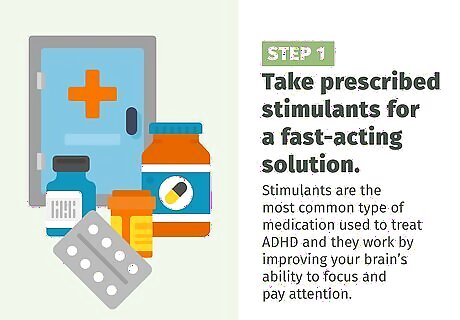
Take prescribed stimulants for a fast-acting solution. Stimulants are the most common type of medication used to treat ADHD and they work by improving your brain’s ability to focus and pay attention. If you’ve been diagnosed with ADHD, talk to your doctor about taking prescription stimulants designed to help treat and manage your symptoms. Examples of ADHD prescription stimulants include amphetamine (Adderall), methylphenidate (Ritalin), and methylphenidate (Concerta). There are many different prescription stimulants used to treat ADHD, so work with your doctor to find one that works best for you. Don’t take stimulants to treat your ADHD unless they’re prescribed by your doctor.
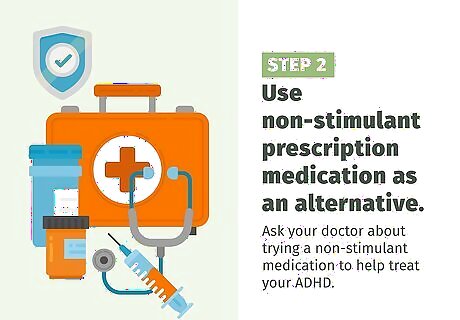
Use non-stimulant prescription medication as an alternative. Non-stimulant ADHD medications take longer to work than stimulants, but they can help treat your symptoms without some of the negative side effects of stimulants. Ask your doctor about trying a non-stimulant medication to help treat your ADHD. Some examples of non-stimulant ADHD meds include atomoxetine (Strattera), clonidine (Kapvay), guanfacine (Intuniv), and bupropion (Wellbutrin). If your symptoms seem to get worse while you’re taking a non-stimulant medication, talk to your doctor. You may need to change meds to find one that works for you.
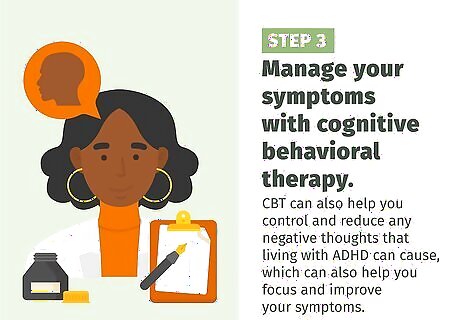
Manage your symptoms with cognitive behavioral therapy. Cognitive behavioral therapy (CBT) is a type of psychotherapy that can help you change your behavior and teach you to better manage your ADHD symptoms. CBT can also help you control and reduce any negative thoughts that living with ADHD can cause, which can also help you focus and improve your symptoms. Search for a therapist near you or ask your doctor for a referral to see one who can help treat your ADHD. Your therapist can develop a specific plan for you that focuses on the ways your thoughts, feelings, and behaviors work together to find an effective way for you to feel better and manage your ADHD. CBT also uses principles such as time management and productivity to help address your ADHD.
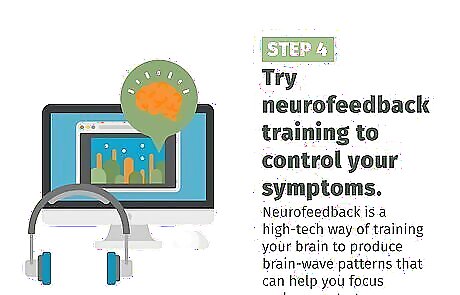
Try neurofeedback training to control your symptoms. Neurofeedback is a high-tech way of training your brain to produce brain-wave patterns that can help you focus and concentrate. Talk to your doctor about trying neurofeedback training to see if it helps you manage and control your ADHD. Neurofeedback training can cost between $2,000-$5,000 USD. One type of neurofeedback training, known as electroencephalography (EEG)-neurofeedback, has been shown to help people who struggle with ADHD.
Natural Treatments
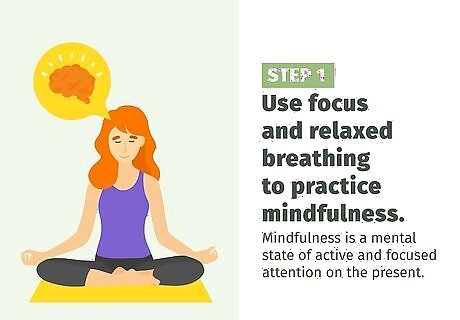
Use focus and relaxed breathing to practice mindfulness. Mindfulness is a mental state of active and focused attention on the present. Research shows that mindfulness can help improve symptoms of ADHD such as distractibility, focus, and attention. Take 5 minutes to sit down and breathe normally to simply be in the moment. Try an everyday activity such as going for a walk or eating breakfast and intentionally focus on the moment. Look online for other mindfulness activities you can try out.
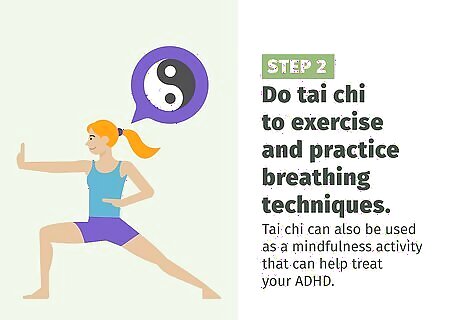
Do tai chi to exercise and practice breathing techniques. Tai chi has been described as “meditation in motion” and involves low-impact, slow-motion exercise combined with breathing techniques. Tai chi can also be used as a mindfulness activity that can help treat your ADHD. Look online for tai chi groups in your area that you can join and practice with. You can also look online for videos or programs you can use to practice tai chi at home or on your own.
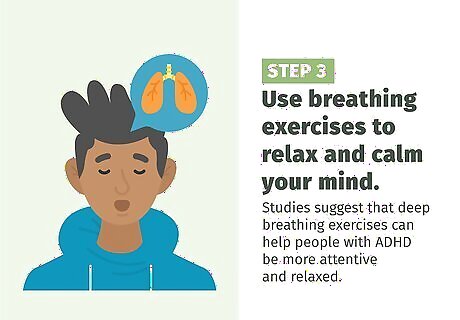
Use breathing exercises to relax and calm your mind. Studies suggest that deep breathing exercises can help people with ADHD be more attentive and relaxed. Breathing exercises can also be used as a form of mindfulness to help you focus and manage your ADHD symptoms. Try inhaling and exhaling 5-6 full breaths in a minute, keeping your focus on the breath to practice. Try to practice for 10-20 minutes a day.
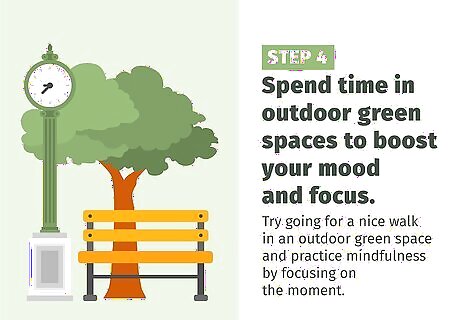
Spend time in outdoor green spaces to boost your mood and focus. Studies suggest that open green spaces can help reduce the overall severity of your ADHD symptoms. Try to get outside and visit a local park, field, or other green space in your area to get some fresh air and potentially reduce your symptoms. Try going for a nice walk in an outdoor green space and practice mindfulness by focusing on the moment.
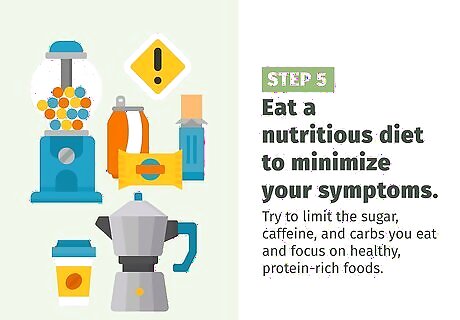
Eat a nutritious diet to minimize your symptoms. A nutritious diet can help keep your ADHD symptoms from getting worse. Try to limit the sugar, caffeine, and carbs you eat and focus on healthy, protein-rich foods. It’s common for people with ADHD to eat unhealthy amounts of high-carb and sugary foods while also not drinking enough water because of the poor planning that is often associated with the condition. Omega-3 fatty acids found in fish oil are important for brain function, so try to have a serving of fish at least once a week.
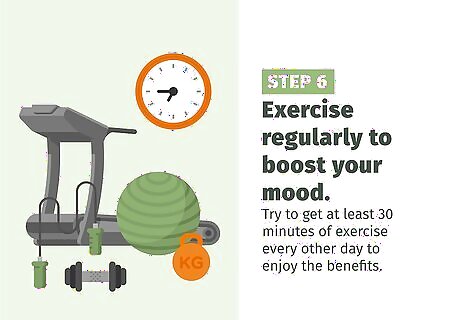
Exercise regularly to boost your mood. Exercise has multiple benefits for an ADHD brain. It increases endorphins, which can help you feel good, and it also elevates your natural levels of dopamine, norepinephrine, and serotonin, all of which can increase your focus and attention. Try to get at least 30 minutes of exercise every other day to enjoy the benefits. Go for a 30-minute walk 4 times a week to get your blood pumping and help improve focus. Try out some aerobic exercise or yoga to boost your attention and brain function. Studies suggest that skill-based exercises like martial arts or ballet can be especially helpful for people with ADHD.
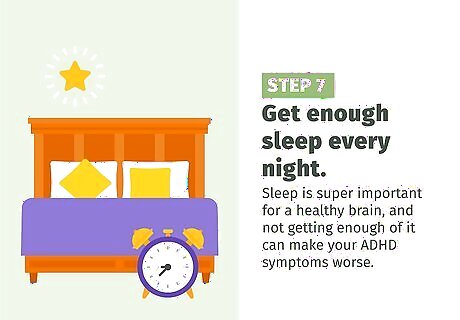
Get enough sleep every night. Sleep is super important for a healthy brain, and not getting enough of it can make your ADHD symptoms worse. Try to get between 7-8 hours of restful sleep a night. If you’re having sleep problems, talk to your doctor or therapist so you can treat any potential sleep disorders. People with ADHD are at an increased risk of developing sleep disorders.
Coping Strategies
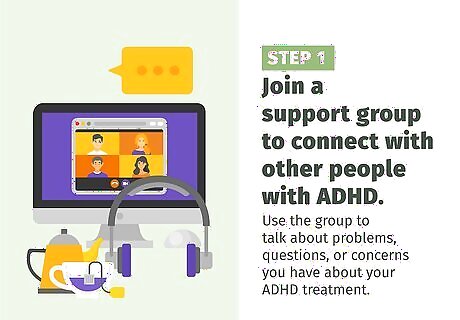
Join a support group to connect with other people with ADHD. Look online or on social media for an ADHD group in your area that you can join. Use the group to talk about problems, questions, or concerns you have about your ADHD treatment. Sometimes, just knowing you’re not alone in your struggles with ADHD can help you feel better. Children and Adults with Attention-Deficit/Hyperactivity Disorder (CHADD) has a program called the National Resource Center on ADHD with information and resources you can use. Visit their website here: https://chadd.org/about/about-nrc/.
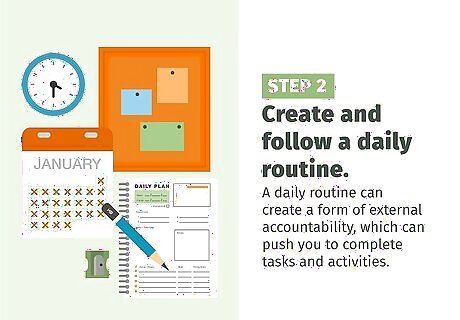
Create and follow a daily routine. The structure of a schedule and a routine can help you feel calmer and reduce the symptoms of your ADHD. Try writing down and organizing a routine and schedule that you can follow each day to help improve behaviors that can be affected by ADHD such as time management, organization, and following through with tasks. Task lists and calendars can be really helpful organizational tools. A daily routine can create a form of external accountability, which can push you to complete tasks and activities.
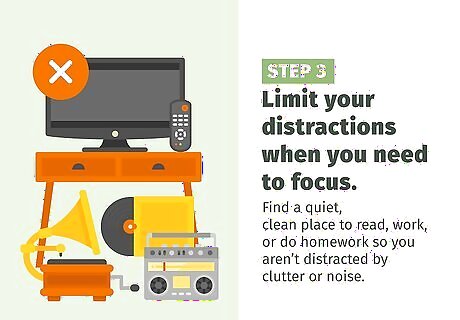
Limit your distractions when you need to focus. Find a quiet, clean place to read, work, or do homework so you aren’t distracted by clutter or noise. Turn off the TV and try to reduce any external noise so you can focus on the task at hand. Some people can focus better with background music, but if it doesn’t work for you, cut out the noise. Find a work routine and space that is the most effective for you.
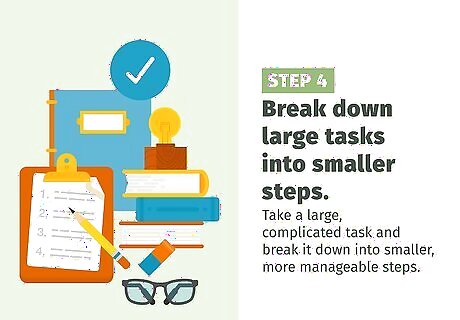
Break down large tasks into smaller steps. Take a large, complicated task and break it down into smaller, more manageable steps. Complete the smaller steps to get a sense of accomplishment every time you knock one of them out, which can help push you to keep going until the whole task is done. It’s easy to feel overwhelmed when you’re faced with a giant job that needs to be done. But breaking it up into smaller, more manageable sections can make it, well, more manageable! For instance, if you need to clean your kitchen, focus on clearing and wiping down the counters first. Then, do the dishes in the sink. Then, sweep and mop the floor. Focus on smaller tasks until the larger job is finished.
















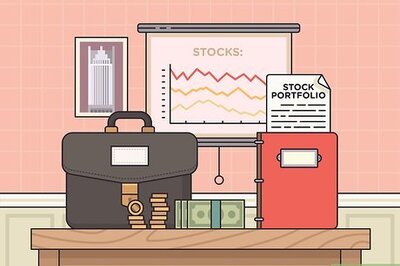
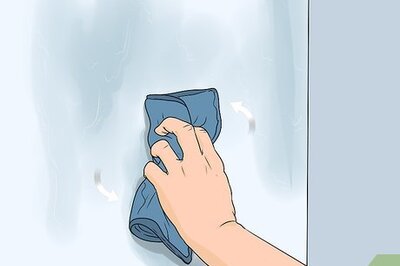
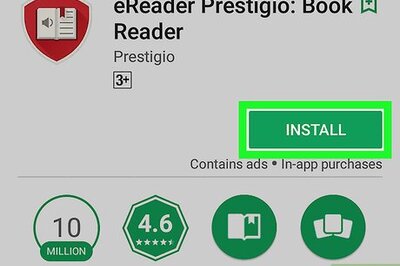
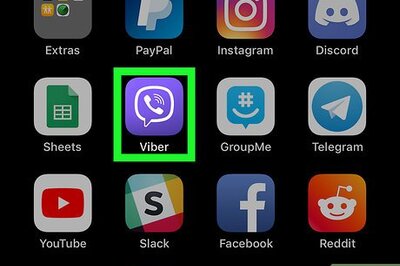
Comments
0 comment